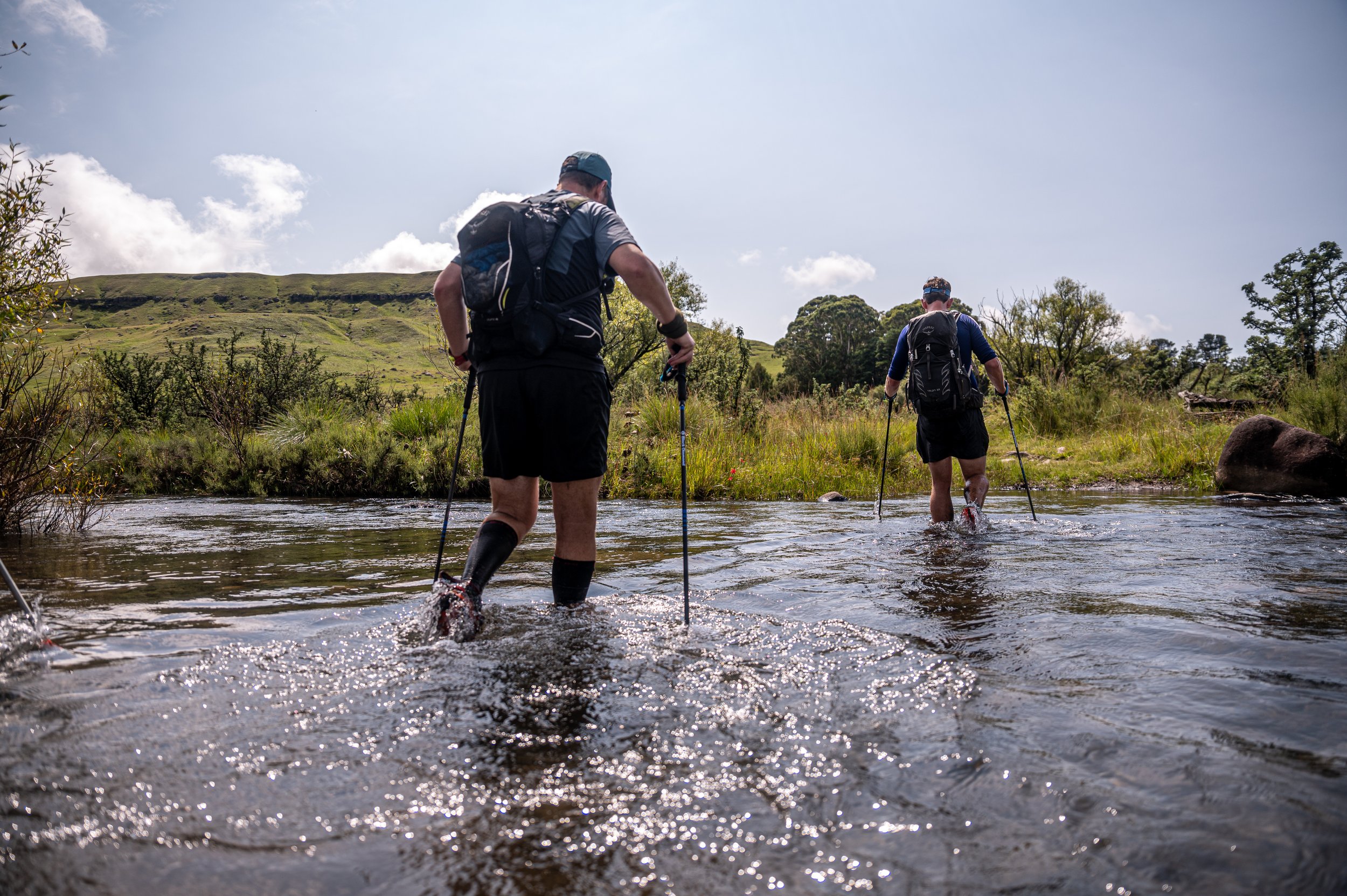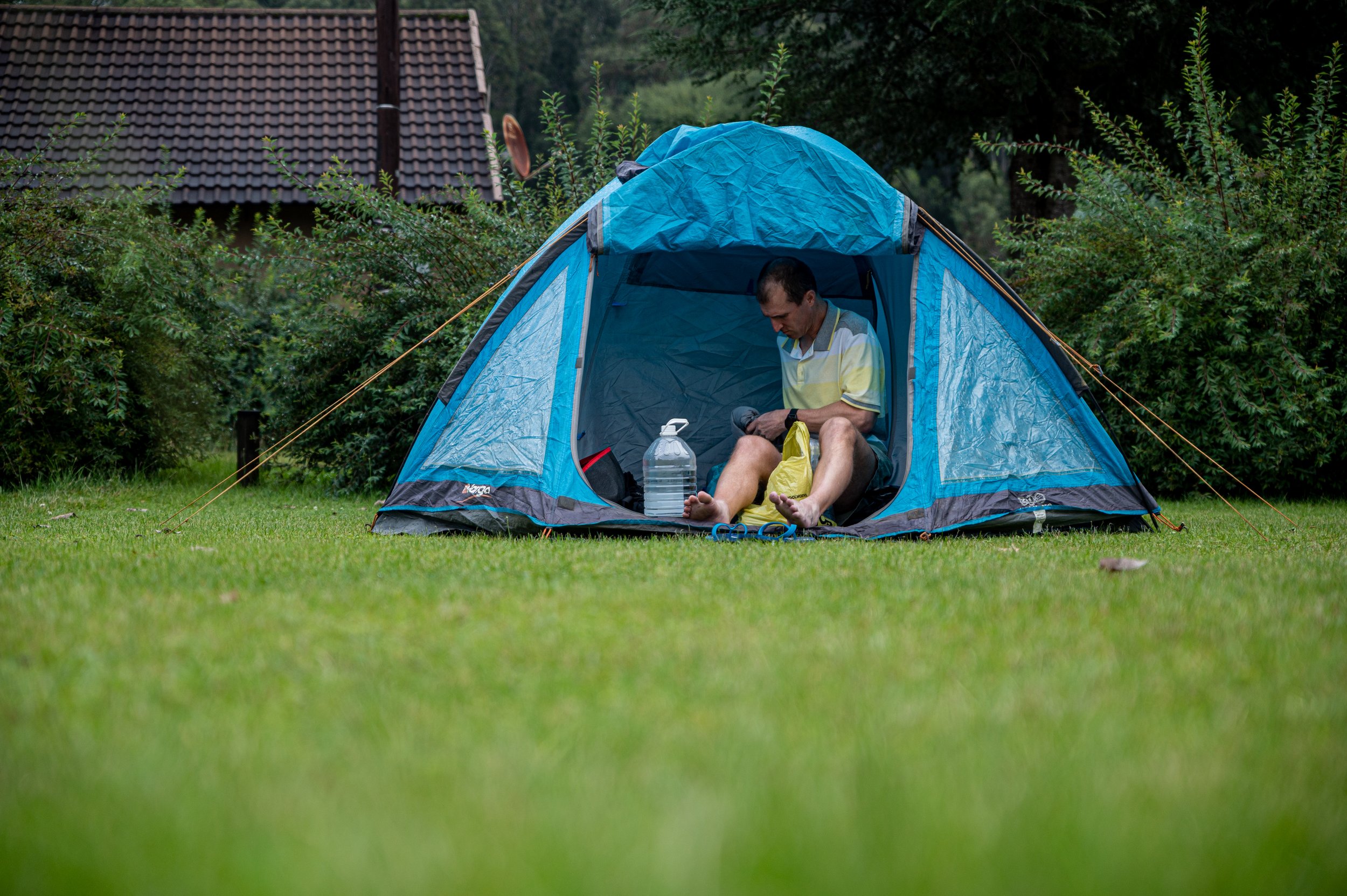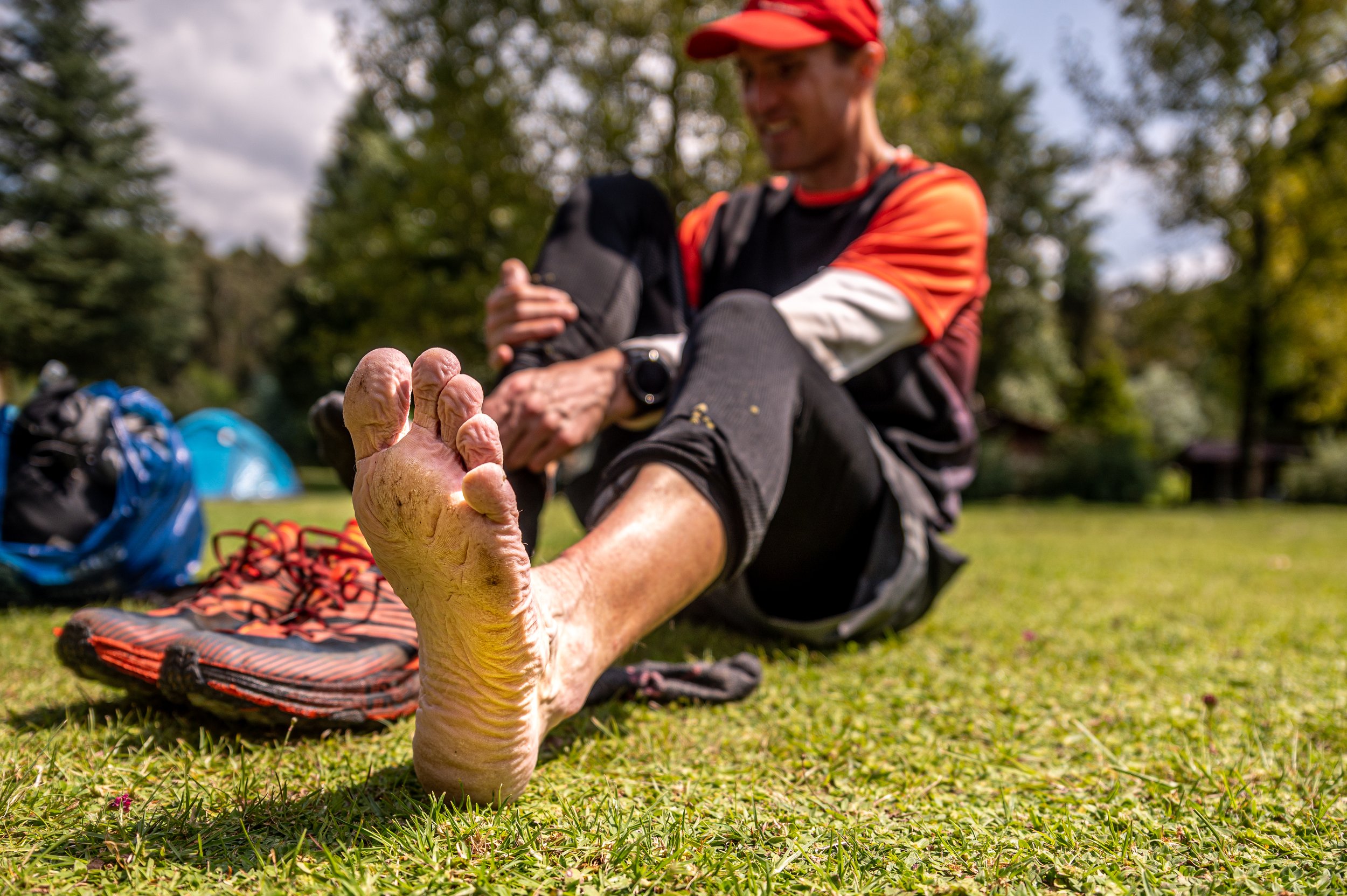What to expect from No Ordinary Race…
With DGT Run being No Ordinary Race, participants can expect everything about this event to be out of the ordinary! From the start and finish venues to the support zones, safety crew, catering, logistics and, last but not least, the mountain trails, you can expect nothing but extraordinary!
For months now - the better part of a year already - the DGT Run organisers have been hard at work to make this dream race a reality. A significant amount of ground work is required to arrange permissions for any event, let alone a 200km, cross-border run. But the impossible has been made possible. DGT Run has the go-ahead from Lesotho Tourism as well as the chiefs in all areas of Lesotho through which participants will traverse. Efforts have now been taken to the next level and attempts are being made to meet individually with local Basotho shepherds in order to notify them of the event and encourage them to be supportive of runners. The rural nature of the Lesotho highlands requires that, despite all modern technology, DGT Run is sending a representative team and translator up into the mountains on horseback to engage and collaborate with the community. In short, there are no proverbial hands being shaken - real people are sharing information, smiles and handshakes in remote mountain villages to ensure a successful running of the inaugural DGT Run!
Certain parts of the route, specifically the beginning and end sectors, require athletes to move across Parksboard land and so permissions from EKZNW and the Maloti Drakensberg Transfrontier Park have also been obtained. While none of these are granted lightly, it is the ethos of DGT run to build good long-term relationships between the various stakeholders along the course. To unite officials of public land, a unique Basotho culture and mountain-loving through-hikers will be a truly momentous achievement. But this is what is required to conserve the amazing Drakensberg wilderness and maintain its accessibility to those that wish to experience and explore the mountains on foot for years to come…
A key component of this vision is the DGT Trust which will serve to support and give back to the high mountain communities of Lesotho. In this manner a mutually beneficial relationship can be established to facilitate the development of a safer Grand Traverse route which will see more hikers on the route. DGT Run will be the integral annual high-profile event which will assist in raising the much needed funding and exposure to achieve this. Below is a summary of just some of the ways in which the DGT Trust aims to grow the Drakensberg Grand Traverse:
Create an established hiking trail which can form part of Lesotho’s Tourism Industry.
Erect permanent shelters and hiking huts along the route, to be run and maintained by the local communities.
Set up safety protocols to assist with the safe passage of hikers, runners and tourists through the area.
Ensure a safe environment where both visitors and local communities appreciate and respect each other.
Create clearly defined and accessible shorter segments of the route so that runners and hikers are not forced to complete a full Grand Traverse in a single effort. This will increase visitor traffic and promote return visits as they aim to complete the whole route over an extended period of time.
Respect in the mountains goes both ways… Give the Basotho kraals and dogs a wide berth as you run through their villages and you’ll find that the shepherds usually call their dogs away. But surprise a dog protecting his hut by running through their yard and the response will likely be the same as your dogs’ to an intruder in your garden! Photo by Adventure Life SA.
Moving on to logistics, your DGT race organisers have made a few changes in your favour. They want you - the pioneers of DGT Run - to have the best possible chance of defeating the Dragon and so have decided to start the race at 8am on Tuesday the 1st of November. This means a full night’s sleep, a fresh morning start and a full day of sunlight to traverse a significant section of the northern Berg before nightfall on day one!
Race registration and briefing will take place on the evening of Monday, 31 October at Witsieshoek Mountain Lodge. Runners can overnight and enjoy a hearty dinner and breakfast at the lodge with spectacular views of the escarpment stretching away to the south and Sentinel peak looming above. From here it’s a short 30 minute 4x4 drive or shuttle trip up to Sentinel car park - the actual starting point of the run and the moment for which everyone is waiting!
With the revised starting time the 100 hour cut-off now falls at 12pm midday on Saturday, 5 November. Consequently your well-earned Celebration Dinner will be held on Saturday evening at SilverStreams Caravan Park, Bushman’s Nek. Again, this will ensure all athletes have a full night’s rest and recovery before their departure back home on Sunday. Runners that complete their DGT journey in well under 100 hours will be able to enjoy hot showers, relax on the lush lawn of SilverStreams and refresh in the cool stream that flows through the beautiful, tented race village.
In terms of mountain safety there will be a number of structures in place to uphold the highest level of participant well-being. On the escarpment athletes can expect at least three safe zones situated in the regions of Cleft Peak, Giant’s Castle and Sani Road. The Cleft and Giant’s stations will be very basic but will provide friendly faces in the form of marshals who will be able to watch over participants, provide first aid and possibly even hot water for a warm drink and meal. We encourage runners to make use of these safe zones for bivvying rather than just sleeping randomly alongside the trail. The Sani Road safe zone will be a full aid station with athletes’ drop bags, food available, a sheltered sleeping area and access to friends and family.
In addition to these three safe zones athletes can expect marshals at both Mafadi and Thabana, key peaks on the course where arrangements can be made for extractions if necessary. All five manned stations will have outside communication and at least one person with first aid qualifications, if not a doctor or paramedic.
One of the main attractions of the DGT route is its purity and the experience of solitude in a remote mountain wilderness. With this, however, comes several risks which are enhanced by difficult communication and minimal vehicle accessibility. In order to counter these risks the DGT safety committee will enforce an Emergency Procedure Plan as well as medical checks and strict cutoffs on the route. Cleft, Giant’s and Sani Road will be the key points in this respect with cuts at 26, 57 and 78 hours respectively. Both Cleft and Sani will have full medical checks for every runner. Participants who do not make cut offs will be escorted on foot down from Cleft or Giant’s Peaks (provided they are medically permitted to do so) or transported by vehicle down Sani Pass back into South Africa and on to Bushman’s Nek.
Despite all efforts being made to mitigate mountain risks, the possibility of an emergency evacuation being required cannot be eliminated. In light of this the KZN sector of MCSA will be valuable in assisting DGT Run in the event of an emergency. They will be on standby and on high alert for the full duration of the event, ready to dispatch qualified mountain rescuers, medics and equipment by helicopter if necessary.
The safety of every single athlete and each member of the support crew is of utmost importance to the DGT Run organisers. Employing the expertise of qualified, experienced and passionate individuals during race week will be paramount to having the right person on the scene of an incident as quickly as possible. Communication will also be vital in such a scenario and so every athlete will be given an interactive tracker in the form of a Garmin inReach Mini which functions by satellite (therefore requiring no cell signal) and can even be used to type messages.
Between now and the start of DGT Run on 1 November the organisers expect to have many more meetings, changes and additions to the safety protocols already highlighted above. But we want to take this opportunity to emphasise that every effort will be made to secure this event, just as one would expect at an “ordinary” trail race.
To conclude, one aspect which has made the build up to the inaugural DGT Run extremely special is the meeting of the organisers with almost every participant of the race already. Over the course of 2022 they have taken the time to move in the mountains with runners at multiple training camps, sharing their personal experiences, knowledge and the hardships of traversing the Drakensberg on foot. Endless discussions have been had on pacing, gear, emergency procedures, nutrition, hydration and sleep deprivation, but so much more has been gained in the way of friendships and a deeper understanding of and love for the mountains…
Should you as a participant or potential entrant have any concerns or recommendations please do not hesitate to engage with us. We are always happy to consider suggestions which will aid in our objective of building a mountain community to share and protect all places wild and free!
A Lesotho valley somewhere on the escarpment - one of many... Photo by Matt Boucher.





